Opened c. 1836
Up Close & Inside
To go in, you have to go along this side bit and the door is around the back.













Originally here.
Internal photos are from the Rotary Club's Doors Open Day in 2009.
St Matthews lays claim to being the oldest Anglican Church in Tasmania, bring opened in 1823. An article in the Mercury written for the St Matthew's centenary in 1925 talks about the history of the church:
Mr. Knopwood retired in 1823 from the chaplaincy of Hobart, and come to live in
New Norfolk, and in the same year the inhabitants of New Norfolk applied to
the Governor-in-Chief at Sydney that he might be appointed chaplain of New Nor-
folk, stating that there was a brick school which could be used as a temporary
church.
The arrival of the official minister, Rev Hugh Robinson two years later, and his first service, is the date used for the centenary:
The beautiful church of St. Matthew's as it now is, its gabled roof, stained glass windows, and noble chancel, is a very different building from what it was when the church was first erected. All that is left of the original building are the walls and flagged floor of the nave, and possibly the western walls of what are now the transepts. And even as to these there is a certain amount of doubt. The foundation stone of the chancel has on it the words, "Erected in 1825, Chancel added in 1894." But there was a schoolhouse which, begun in 1823, was finished in 1824. Whether this was the present nave or part of it is uncertain, though there is little doubt that a portion of the present church was originally built for a school. It was not used definitely as a church till Mr. Robinson's time, for, it was in the month that he arrived there, August, 1825, that tenders were submitted for church furniture, and a pulpit, reading desk and communion table put in the building. The carpentry work in the building was of a poor quality; for on Sunday, December 4, 1825, a portion of the ceiling fell in.
Since that time, the building has been extensively modified and its appearance has dramatically changed. A postcard from the State Library of Victoria with an illustration c.1825 and an engraving from LINC Tasmania, published in 1834 both show a church building very different to that in the above photo.
Krauss locomotive
Several of these Krauss locomotives operated on Tasmania's West Coast. This particular engine once belonged to the Mt Lyell Mining Company. It runs on narrow (2 feet) gauge lines. By using these narrower tracks, the mining companies were able to build railway lines more cheaply to access areas that would have been very expensive to reach by other means.
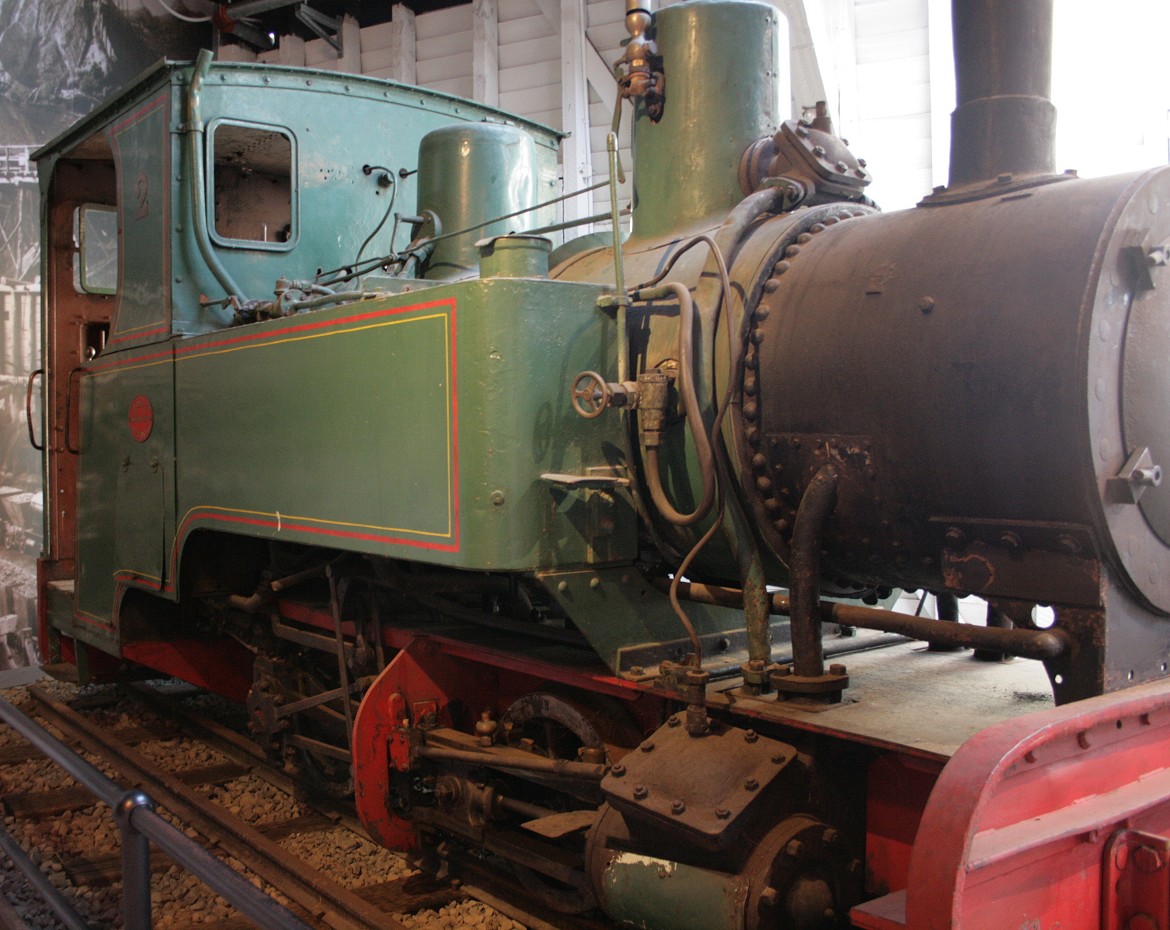
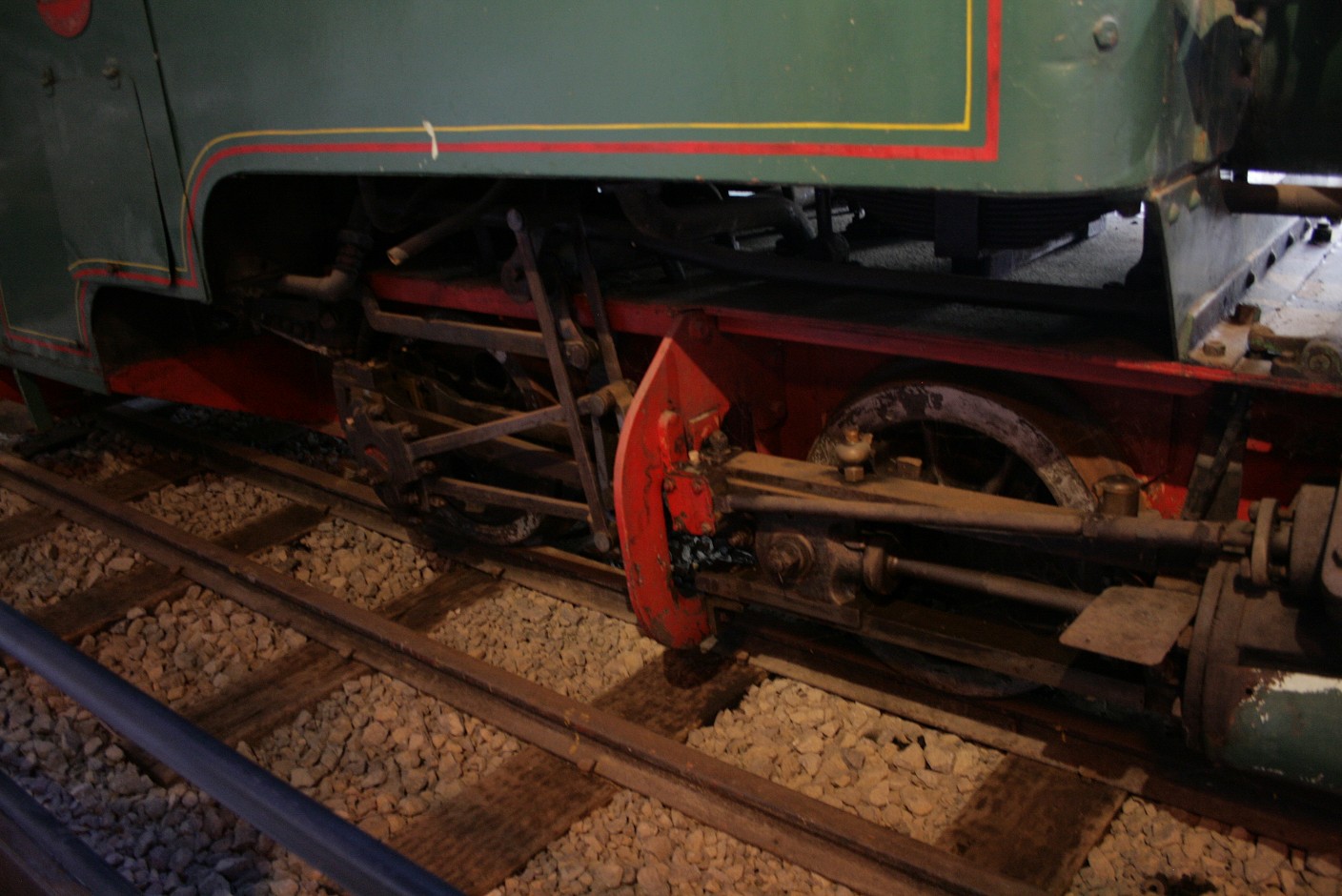
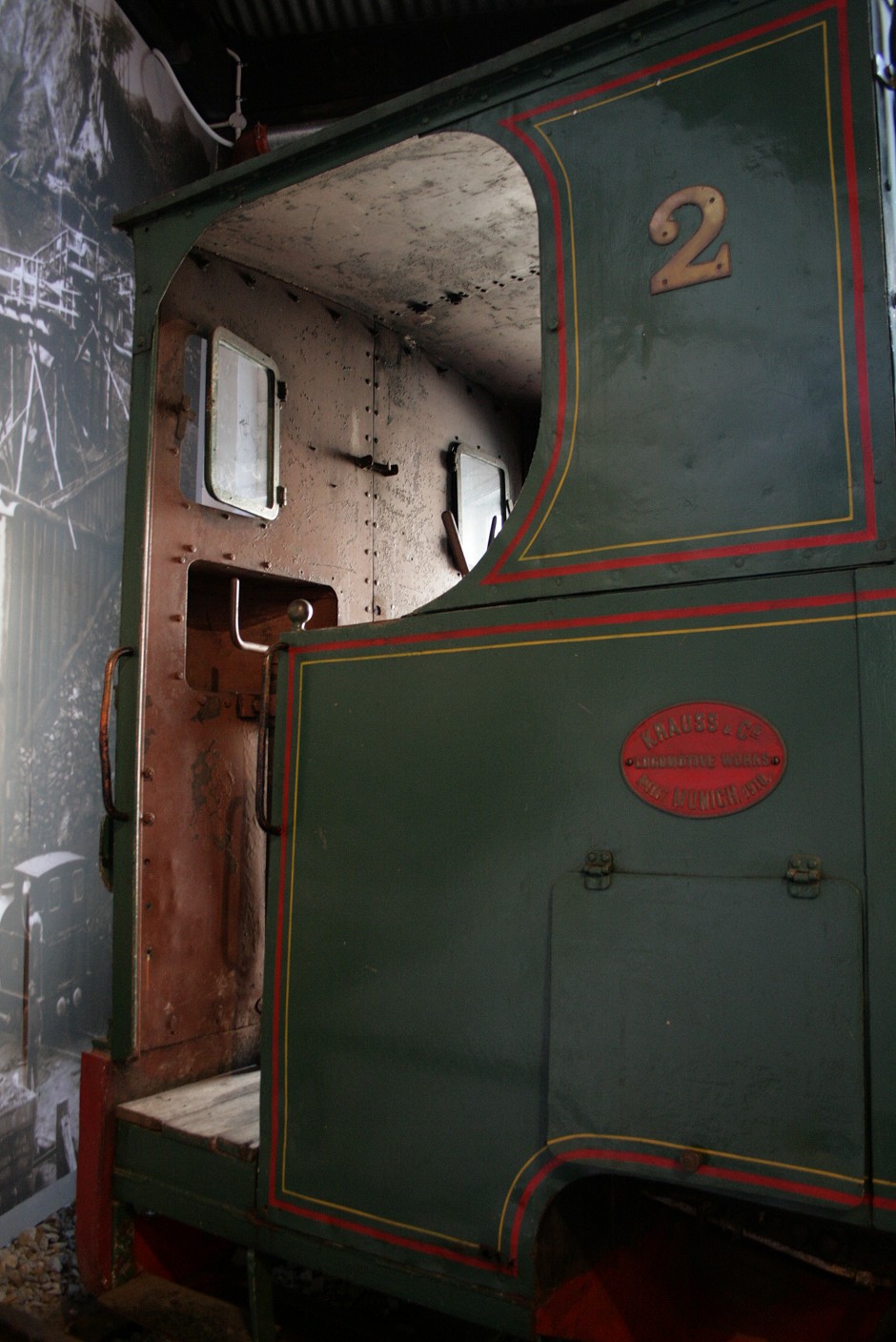
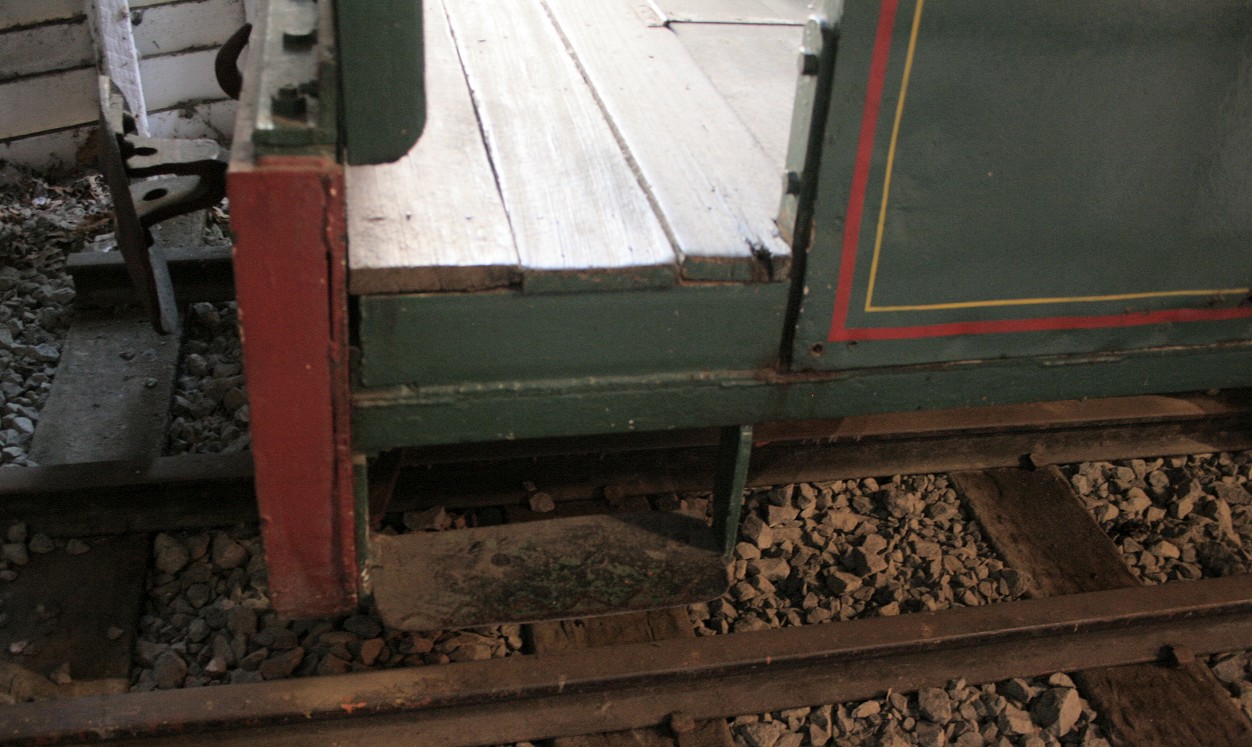
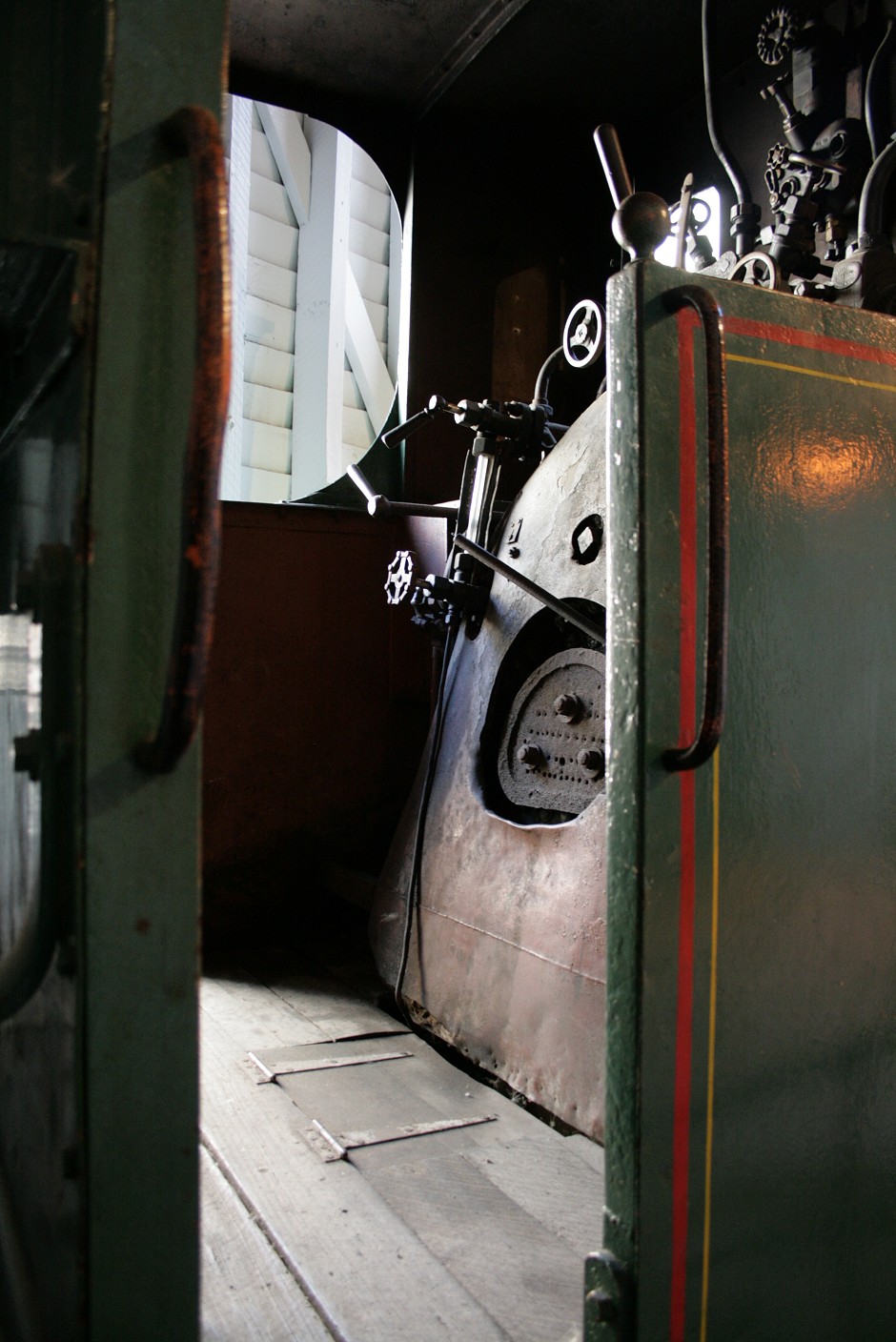
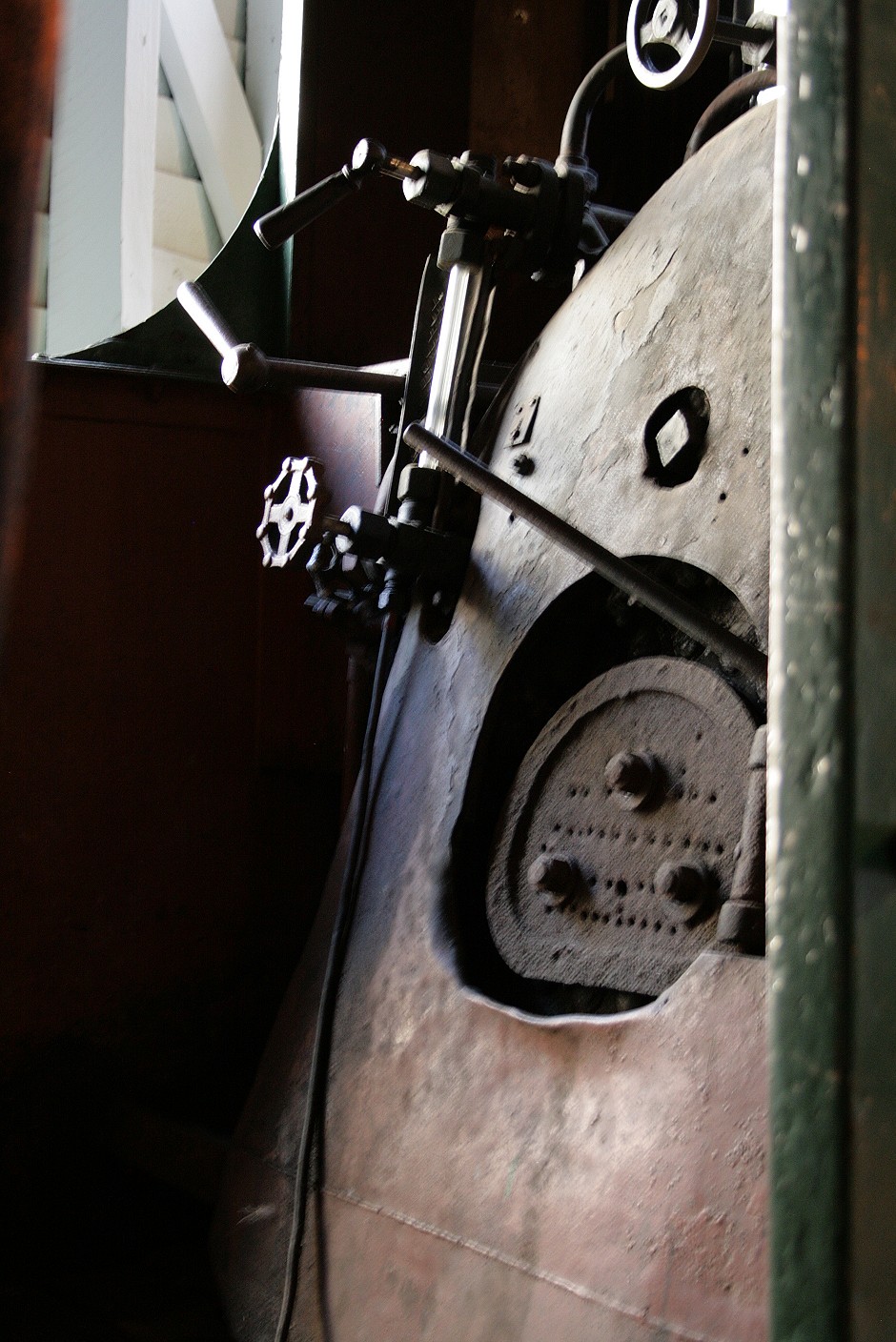
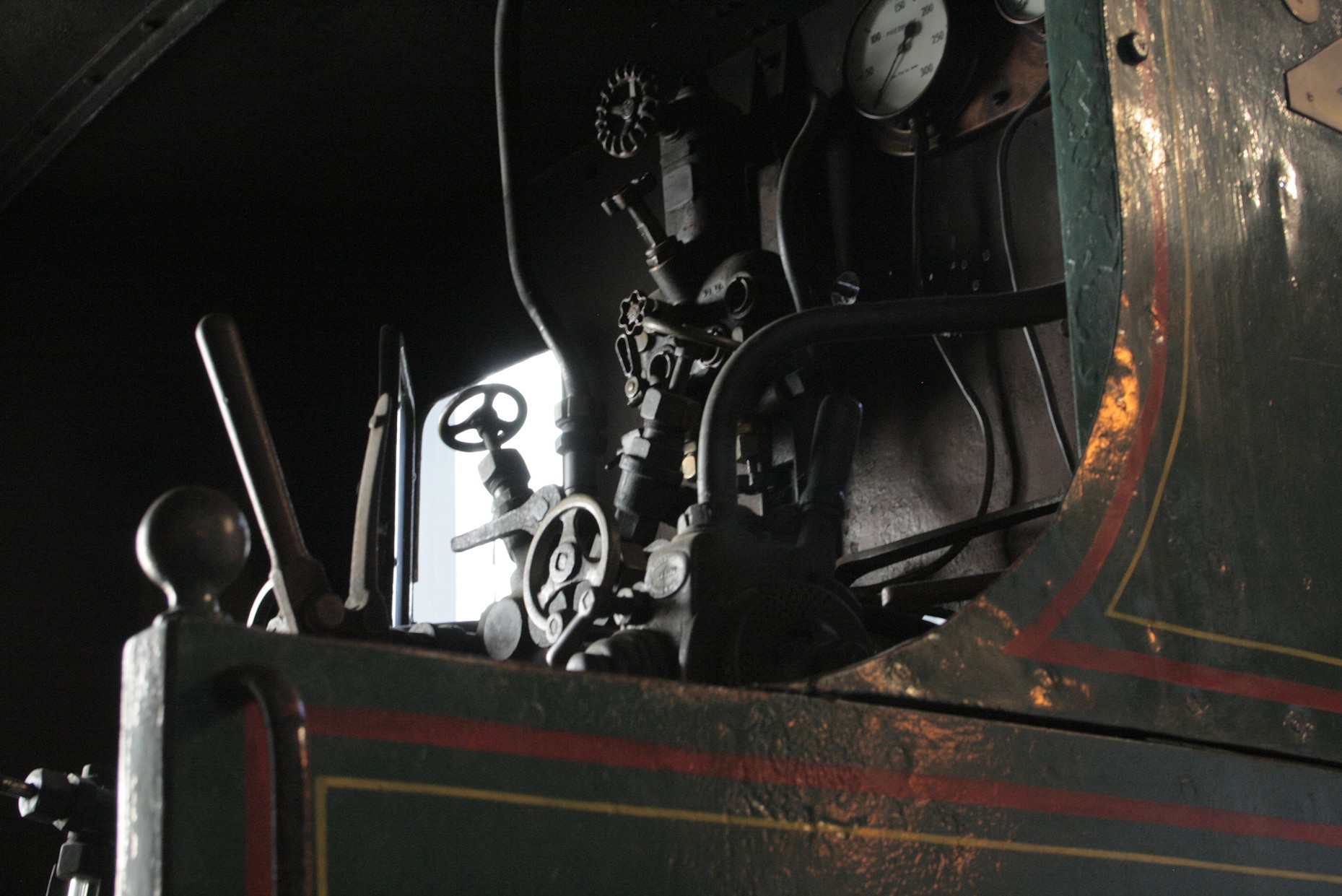
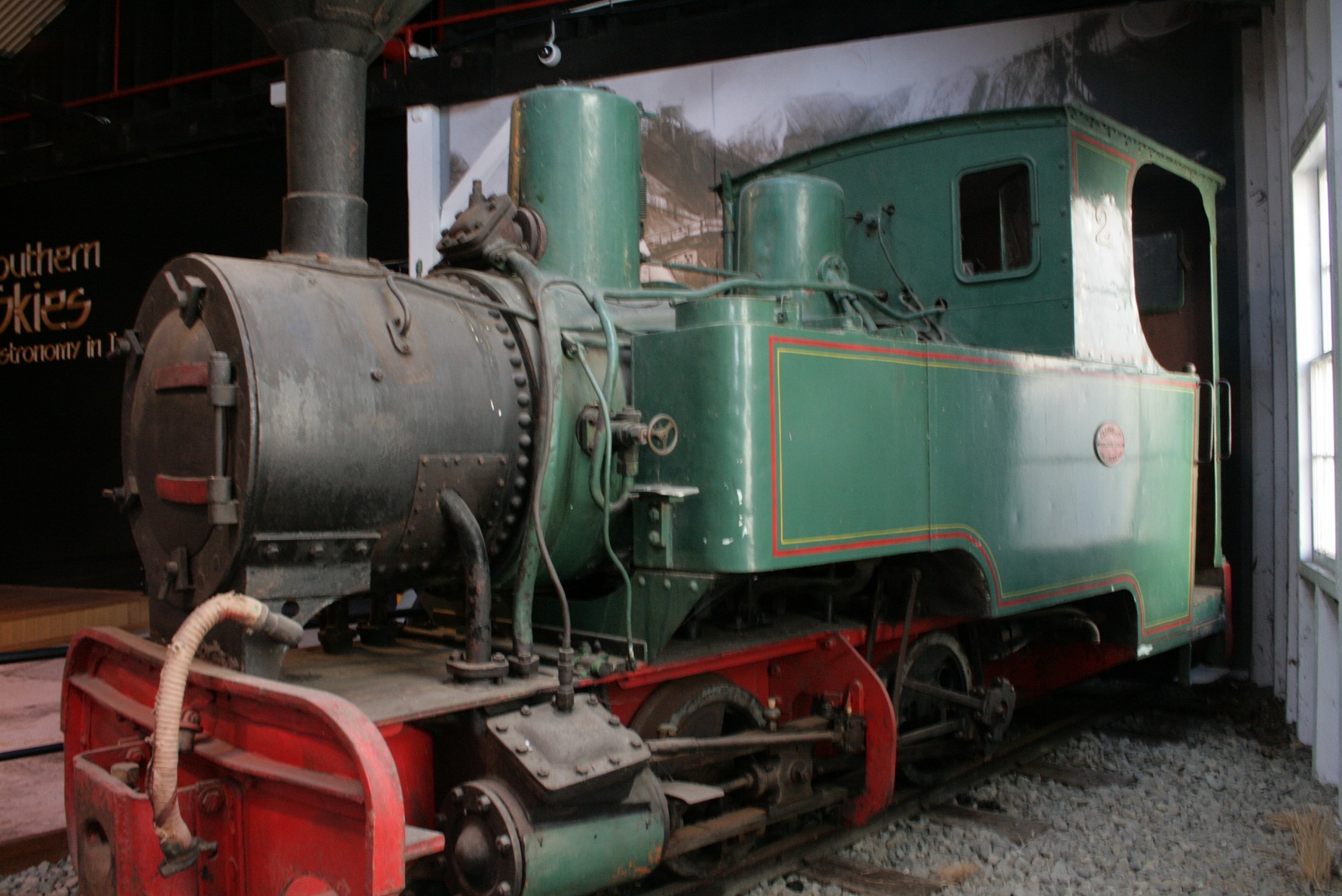
Two posts, from two visits with different content.
Trevallyn Power Station was built 1955, and replaced Duck Reach. It's managed by Hydro Tasmania. A few years back, the state-owned HEC was broken up into 3 companies: the Hydro, who generate the power; Transend, who transmit it, and Aurora, who deal with the consumer side.

First, the 1950s style control room. Mostly replaced now by a couple of PCs.
The next stop is right down on the turbine floor
Two posts, from two visits with different content.
Trevallyn Power Station was built 1955, and replaced Duck Reach. It's managed by Hydro Tasmania. A few years back, the state-owned HEC was broken up into 3 companies: the Hydro, who generate the power; Transend, who transmit it, and Aurora, who deal with the consumer side.

From accompanying information leaflet:
Foot Powered Former
Pedal opertain dirving a pulley which drove a small turning bit by way of leather blet. Seat was separate and sdjustable.
Wooden table was separate and adjustable.
Seat has "former" cast into it. Makers name cast into both sides of main main casting.
Cast into foot is "PAT'D FEB' AND MAR' 1870." (could be 1876)
Accompanying information sheet says:
Wooden bed constriction with lathe mounted on top (2 sections). No distinguishing marks. Probably home-made.
"Folding handle".
Two of these. A small mangle (2 photos) sitting on table and a larger freestanding mangle (3 photos).

"Made in England".
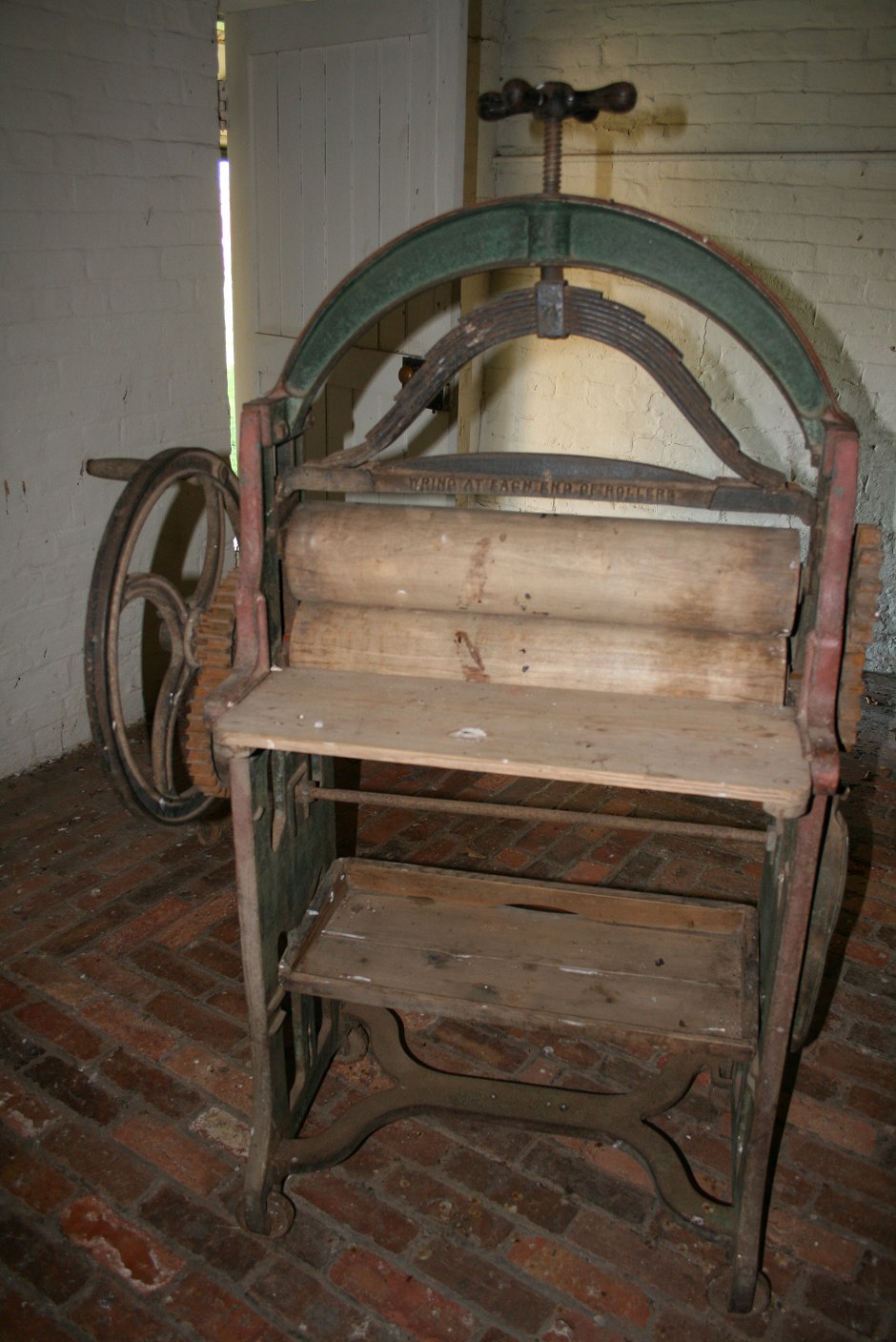
Freestanding mangle. Above the rollers it has "Wring at each end of rollers".
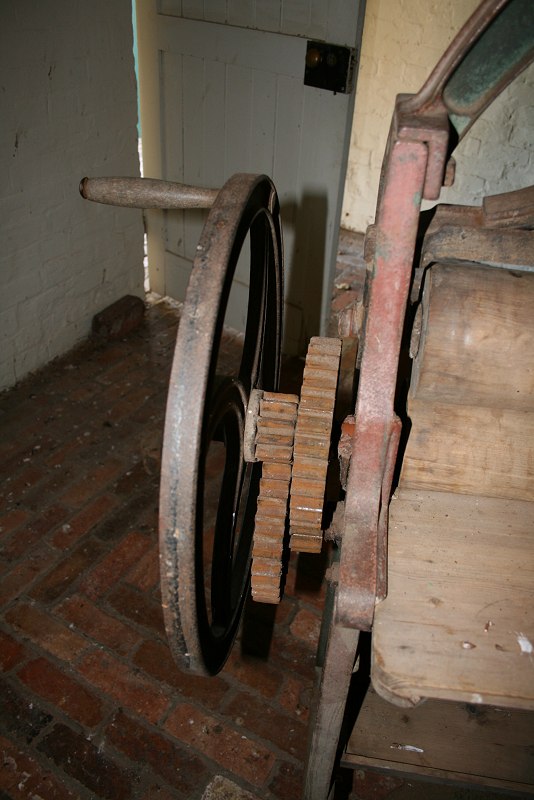
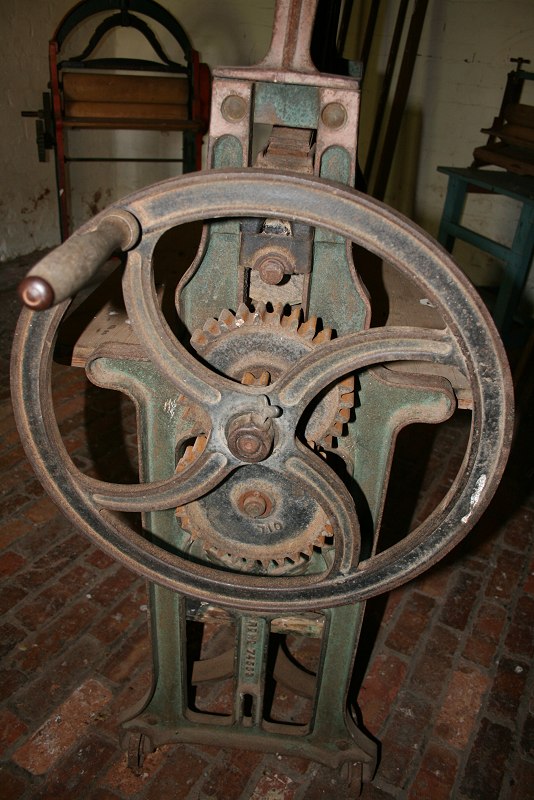
On cog behind wheel "OIL"
Woolmers Estate, near Longford, Tasmania,
Established 1817.
Extensive outbuildings and equipment relaed to wool growing and apple production.
Website.
Related posts.
"Interior of the Dance Hall Rhodes on the Patuxet, R.I.", postmarked 1908
No 8 tram, at Launceston Tramway Museum. It was in service in Launceston from October 1911 to June 1951.
Starting from the front, there is the driver's compartment, an open seating section, access to the saloon, saloon, another open seating section with a door into the saloon, and a driver's compartment at the other end.
Driver's compartment (front of tram to the right)
This bedroom door lock is functionally the same as the utilitarian rim locks elsewhere on the same property, wherein the handle moves the latch will releases the door and the key turns the bolt that secures the door, independently of the latch. There are are two noticeable differences.
Firstly, the key hole cover.
Garden gate at National Trust property, Clarendon.
One side has a handle and lever. Pushing down on the lever
Rim lock from the 1830s. The logo isn't clear on this lock.
This is from a similar lock (or mabye a bit older, because the top lock has "Patent Expired" where this one hasn't.) shows the arms of William IV pf the United Kingdow (reigned 1830-1836). Made in the UK, these locks were exported to Australia (where this one is) and the USA.